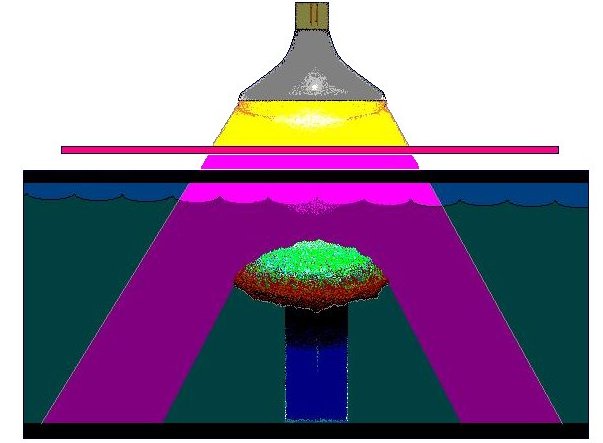I don't mean UV sterilisers integrated into filtration. It seems like a lot of the fish we tend to keep would be exposed to fair amounts of UV light in the wild and I just noticed on a pack of hikari food that it specifically mentions supplementation designed to "support colour retention in UV deficient environments".
I keep some reptiles that can be kept and even bred without UV lighting but providing it still seems to make a big difference to their overall health and wellbeing as well as colour.
Could it be that uv bulbs would be of some benefit for some fish? I've never seen this discussed before. Couldn't it also be a factor in why sometimes algae doesn't seem to thrive in natural water bodies where it seems like it should?
Simple answer is most UV effects in an aquatic environment have little proof. The few that " may" can usually be duplicated with plain old intensity in the blue- violet range.
Second, historically true UV LEDs were expensive and short lived. Like 1000's of hours vs 10000's of hours.
Currently real statistics are few and far in-between. You can hardly tell say 15% loss over time in a visible light spectrum.
Especially over say 3 years. You would just compensate visually. Unless completely dead the UV LEDs may never show becoming ineffective due to output loss.
BUT if you raise turtles or penguins it's needed...
🙂 The vit D thingy .
Now this is more of an ??? thing aquatically rather than it makes no difference thing.
UV does have terrestrial effects but more in the drug and flavor category.
Then terrestrials are grown in 100's of ppfd.
With some overlap in "pigment" production
The above is for uv-a which in the low ranges ( 350-ish-400) is still photosynthetically active
Higher uv's like b and c well cost/ benefit for aquatics seems to lean to not worth it from a cultural and cost standpoint.
Well NEVER add C..
As to B:
UV-B regulates photomorphogenesis including hypocotyl elongation inhibition, cotyledon expansion, and flavonoid accumulation, but high intensity UV-B can also harm plants by damaging DNA, triggering accumulation of reactive oxygen species, and impairing photosynthesis.
Now I have no idea about fish. I do suspect that some foods may contain dyes that can tissue accumulate and be fluorescent.
Lots of royal blue or violet nm leds may produce a like effect on the dyes
" Brightners" are common in paper and cloth
Last as to t5's. Seebs mixed but my general statement is unless specifically designed any UV output (a,b,or c) is minor.
There "color punch" is mostly due to the RGB effect and/ or higher cri than older led designs.
Or like the old " growlux" more red and blue phosphors than a daylight bulb.
Glowfish still glow w no UV ..




